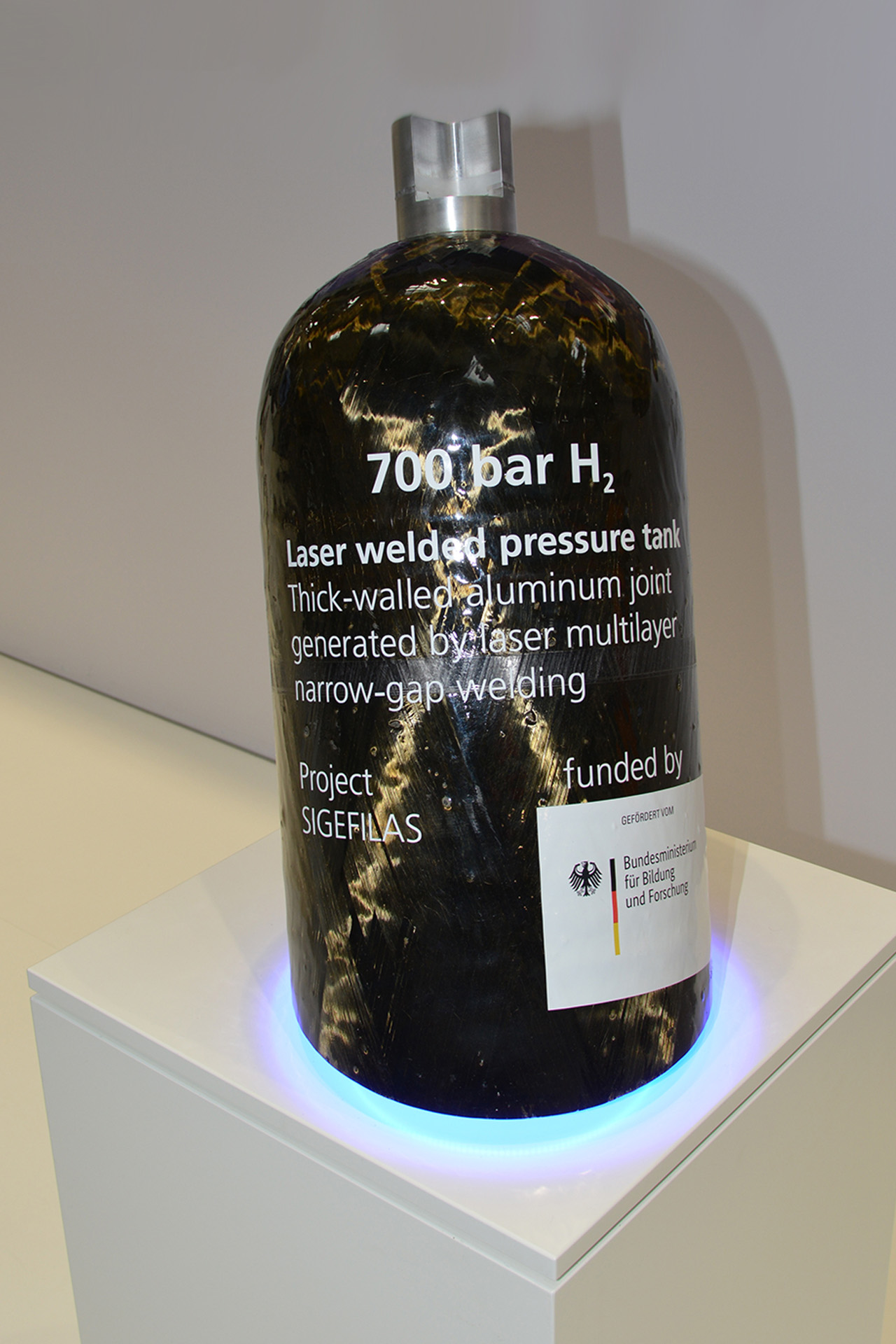Reducing CO2 emissions in power generation and stopping global warming are key societal issues of the 21st century. In particular, "green energy resources" such as sunlight, wind and hydropower can be used to produce hydrogen as a highly promising energy storage medium. In addition, it is necessary to increase the efficiency and service life of existing conventional power plants or to replace them with modern, energy-efficient ones.
Metal shielding gas (MSG), submerged arc (SAW) and tungsten inert gas (TIG) welding can damage the material and surface properties of alloys by inadmissibly high heat input. The resulting higher corrosion tendency leads to crack formation at the weld seams and thus to a shorter service life of the components.
Advantages of laser beam welding
Material
- Suitable for high-temperature materials and additively manufactured components
- Utilization of material potentials by cost-efficient manufacturing of novel alloys, e.g. transition from steel to high-temperature nickel materials such as 617occ
- Laser multi-pass narrow-gap welding (MPNG) suitable for welding thick walls up to 140 millimeters, alloys prone to hot cracking, and high-alloy and carbon steels
Process
- Process-stable joining with high reproducibility utilizing material properties, e.g. static strength, crack resistance, crack propagation, creep fatigue, creep rupture strength
- Savings of up to 80 percent on expensive filler materials thanks to very narrow weld seams
- Seam detection and process monitoring by inline and offline sensors, e.g. optical image recognition, plasma detection, acoustics, ultrasound
Application examples
- Turbine construction: rotor shafts, e.g. made of steel-nickel alloys of 617occ, 718occ
- Power plant construction: piping, heat exchangers, high-temperature applications, evaporators, vessels, e.g. made of aluminum, copper and titanium
- Fuel cells made of high-strength stainless steel alloys
 Fraunhofer Institute for Material and Beam Technology IWS
Fraunhofer Institute for Material and Beam Technology IWS